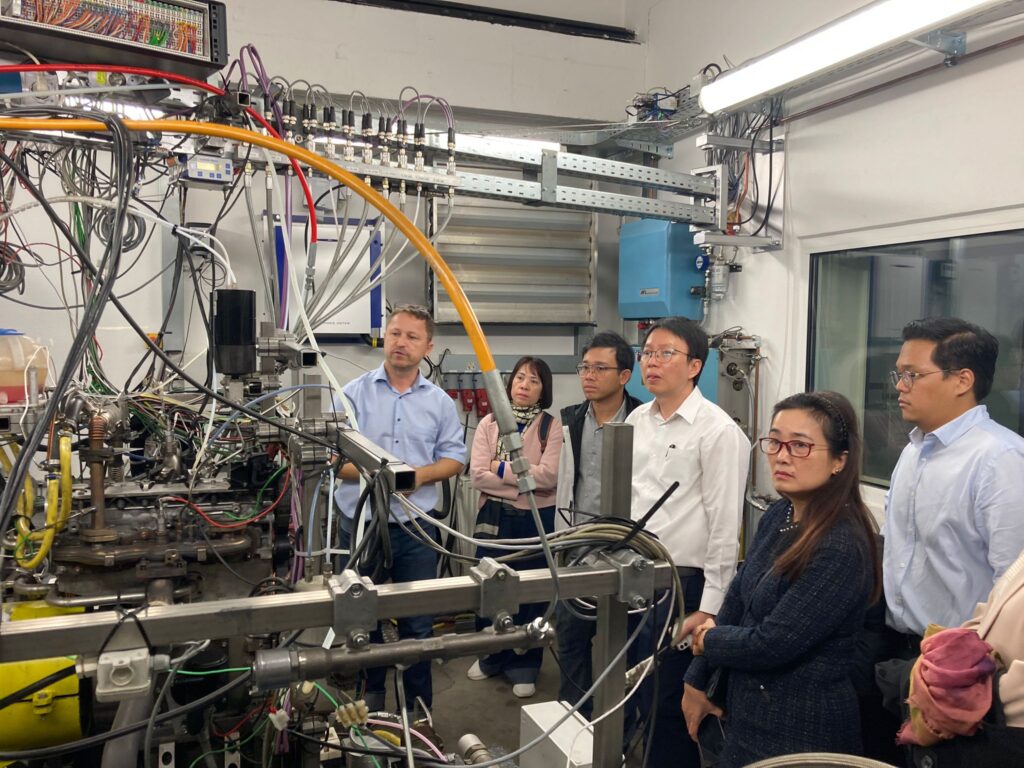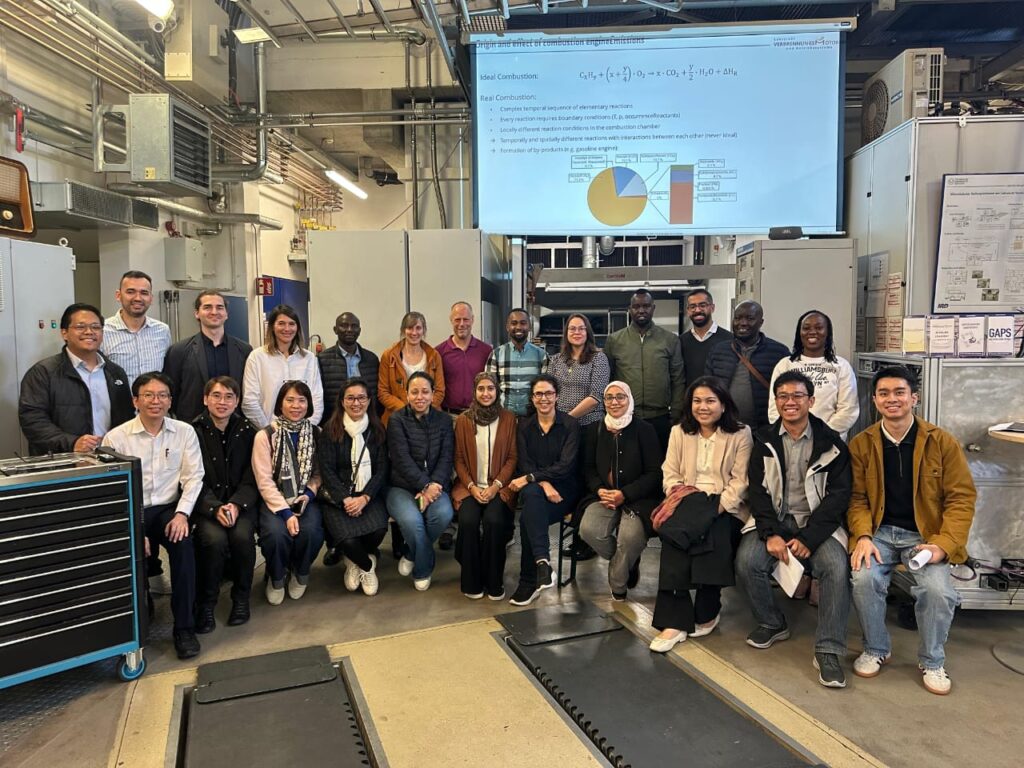
When Professor Frank Atzler, combustion engine expert at the Technical University of Dresden, welcomes a group of 25 visitors from seven countries, he begins not with a speech but with a chemical formula:
CXHy + x + y/4 ∙ O₂ → x ∙ CO₂ + y/2 ∙ H₂O + ΔHᴿ
“This,” he explains, “is the combustion process.” It’s the invisible reaction that turns fuel into motion — and into emissions. With this short lesson in chemistry begins a hands-on exploration of how vehicle emissions are measured and understood.
For 20 delegates from Colombia, Kenya, Morocco, Thailand and Vietnam, this topic could hardly be more relevant. All five countries are working on new regulations to limit fuel consumption and CO₂ emissions from vehicles entering their markets.
Reliable measurement is the foundation of such regulations. Vehicles need to be tested under comparable conditions; procedures must be standardised; and data must be trusted by regulators, manufacturers, and the public alike.
To make these complex topics tangible, the IKI-funded IMPROVE project organised a study visit to Dresden — because seeing a testing lab in action makes the topic far more tangible than any theoretical discussion ever could. The team at TU Dresden, led by Prof. Atzler and Tilo Ross, opened their laboratory doors to share how emissions are tested in practice.


In the heart of the laboratory, surrounded by the hum of machinery and a maze of pipes, pumps and analysers, the delegation learned how a chassis dynamometer — a roller test bench — simulates real driving conditions. Cars are “driven” indoors while exhaust gases are carefully collected and analysed.
The visitors were struck by the level of precision: every test requires strict control of ambient conditions such as temperature. “Nothing here happens by chance,” one participant observed.
Amid this impressive setup, Prof. Atzler explained the origins of emissions. Chemically speaking, CO₂ is not a pollutant — it is the natural outcome of combustion, directly proportional to the amount of fuel burned. Other emissions, such as nitrogen oxides (NOₓ) and particulate matter, depend on factors like combustion temperature, exhaust treatment systems, vehicle age and maintenance and fuel quality.
Understanding these differences is crucial when designing regulations: while CO₂ reduction is about energy efficiency, pollutant control focuses on air quality and health impacts. (learn more about this topic in our factsheet).
But how can these gases be measured consistently across the world? Prof. Atzler introduced the group to testing protocols and driving cycles — internationally standardised procedures that specify how vehicles must be driven, under which conditions, and how results are reported.
These standards make vehicle tests comparable between countries. Governments can thus base their regulations on shared evidence — even if they do not have testing infrastructure themselves.
Thanks to facilities like TU Dresden’s, emissions and fuel consumption are measured according to rigorous, transparent standards. The visit turned complex chemistry and abstract regulation into something tangible. Behind every CO₂ number lies a careful process — one that begins, as Professor Atzler reminded his audience, with a simple truth:
CO₂ is the product of combustion.
Learn more about emissions testing and the difference between air pollutant and CO₂ standards in our fact sheet.
The IMPROVE project is implemented by the Deutsche Gesellschaft für Internationale Zusammenarbeit (GIZ) GmbH and is funded through the International Climate Initiative (IKI) of the German Federal Ministry for Environment, Nature Conservation Climate Action and Nuclear Safety (BMUKN). It supports partner ministries in Colombia, Kenya, Morocco and Thailand to develop policies and regulations that support the transition to cleaner and more energy efficient vehicles.
 Exploring emissions testing directly from the engine ©Verena Flues
Exploring emissions testing directly from the engine ©Verena Flues

Verena Flues
verena.flues@giz.de
Visit profile